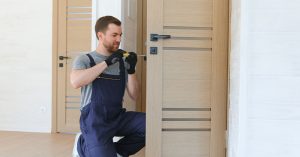The Importance of Knowing What’s Behind the Walls
Before starting any renovation project, whether it’s a bathroom upgrade or full home remodel, there’s one step that shouldn’t be skipped: asbestos testing. Many homes built before the 1990s were constructed with materials that could now pose serious health risks. Therefore, identifying these materials before cutting into drywall or ripping up flooring isn’t just smart—it’s necessary.
To clarify, asbestos isn’t always obvious. It can be hidden in insulation, ceiling textures, tiles, duct wrap, and many other common materials. So, without proper testing, homeowners and contractors alike could unknowingly release dangerous fibers into the air.
Asbestos: What It Is and Where It Hides
Asbestos is a naturally occurring mineral once widely used for its strength and heat resistance. However, once its health effects became undeniable, its use was banned or heavily restricted in many countries. In other words, asbestos was once popular, but it’s now recognized as a serious hazard.
That said, asbestos wasn’t removed from existing buildings. Consequently, homes built before the late 1980s often still contain it. It may show up in unexpected places. For example, vinyl floor tiles, textured ceilings, drywall joint compound, and even old roofing materials can all contain asbestos.
Above all, what makes asbestos so dangerous is how it behaves when disturbed. Once fibers become airborne, they are nearly impossible to detect without proper equipment. Breathing them in can lead to long-term health conditions, including mesothelioma and asbestosis.
Why Testing Should Come First, Not Last
Some homeowners believe they can start renovations and “deal with” asbestos if they find it. However, by the time asbestos is discovered mid-project, it’s often too late to prevent exposure. Moreover, untested demolition can lead to contaminated air throughout the home.
In addition, certain rules in Canada, and more specifically in Alberta, require asbestos testing prior to any demolition in older buildings. This isn’t just about safety. It’s a matter of compliance. Homeowners can face fines or project delays for skipping this step.
Testing isn’t only for large-scale renovations. Even removing a wall or installing recessed lighting in a popcorn ceiling should raise a flag. Most importantly, professional asbestos testing can help homeowners make informed decisions about next steps, such as safe removal or containment.
The Testing Process: What to Expect
Asbestos testing must be done by qualified professionals using approved methods. Typically, a small sample of the suspected material is collected in a controlled manner. That means there’s minimal disturbance and no risk of fiber release during testing itself.
Subsequently, the sample is sent to a lab for analysis. Results usually take a few days. Meanwhile, it’s essential to avoid working in the area until the lab confirms whether asbestos is present.
If results are positive, the team will recommend whether removal, sealing, or full abatement is necessary. For example, if the asbestos is intact and won’t be disturbed, sealing might be enough. But if demolition is planned, full removal is often the only safe option.
For anyone planning work in Calgary, it’s a good idea to explore Professional Restoration Abatement and Cleaning Services in Calgary that can guide the entire process from testing through remediation.
Health Risks You Shouldn’t Ignore
The reason asbestos is taken so seriously is because of how it affects the lungs. Unlike dust or common allergens, asbestos fibers do not break down or exit the body. Once inhaled, they embed themselves into lung tissue where they remain.
Over time, this can cause scarring and cellular damage. Therefore, exposure, even if short-term—can have long-term consequences. Most importantly, there’s often no way to know someone was exposed until years later, when symptoms appear.
Children, seniors, and people with existing respiratory issues are especially vulnerable. Likewise, even small renovations in multi-unit buildings can spread fibers into shared air systems, putting more people at risk.
Cost Versus Consequence: Why Testing Pays Off
At first glance, asbestos testing might seem like an unnecessary expense. But when compared to the cost of cleanup, lawsuits, or medical issues, it’s actually very affordable. However, failing to test can lead to thousands of dollars in remediation if fibers are released into the home. Furthermore, insurance may not cover damages if proper protocols weren’t followed.
Testing also prevents project delays. Once asbestos is found mid-project, everything must stop until certified professionals step in. That pause alone can create scheduling nightmares and cost increases.
If you’re unsure where to begin, it’s best to get in touch with an expert who understands both the risks and regulations of working in older Calgary properties.
Renovation Scenarios That Require Caution
Not all projects carry equal risk. That said, there are certain types of renovations where asbestos is especially likely to be found. For example:
- Removing textured ceilings
- Tearing up old vinyl tile or linoleum
- Replacing attic insulation
- Cutting through drywall or joint compound
- Modifying heating ducts or venting systems
Each of these tasks involves disturbing materials where asbestos could be present. Therefore, before beginning, it’s wise to have samples taken and reviewed by a qualified technician.
Additionally, homeowners should ensure contractors are aware of asbestos risks. Some do not proceed without a test report on file, while others may not ask at all. In the end, it’s your property and your safety that matters.
Tips Most People Miss Before Renovating
One often-overlooked tip is to check building permits or past renovation records. If you’re lucky, you may find prior documentation about asbestos in the home. However, even if records exist, it’s still best to test, as conditions or materials may have changed over time.
Another helpful practice is doing an air quality test after removal. To clarify, once asbestos has been abated, testing the air ensures no fibers remain. This extra step provides peace of mind and verifies the success of remediation efforts.
Lastly, if your home has multiple suspected areas, consider batch testing. Instead of sampling one area at a time, professionals can test multiple materials in one visit, which often saves time and reduces overall cost.
FAQ
How do I know if my home contains asbestos?
There’s no way to know just by looking. Homes built before 1990 have a higher chance of containing asbestos, especially in insulation, flooring, or ceiling materials. Professional testing is the only reliable method of confirmation.
Is asbestos still dangerous if it’s not disturbed?
Yes, but less so. Asbestos becomes dangerous when fibers become airborne. If it’s sealed and undisturbed, it poses minimal immediate risk. However, any planned renovation should trigger testing to prevent accidental exposure.
Can I test for asbestos myself?
It’s not recommended. Improper collection can release fibers, increasing exposure risk. Professionals use safety equipment and follow strict procedures to collect samples safely and legally.
What happens if asbestos is found?
If asbestos is present, certified abatement technicians are required to remove or seal it. The area must be isolated during this process, and final air testing is often performed afterward to ensure safety.
Do I need to test the whole house?
Not necessarily. Only materials that will be disturbed during the renovation need to be tested. However, in older homes, it may be worth checking other areas as a precaution.



